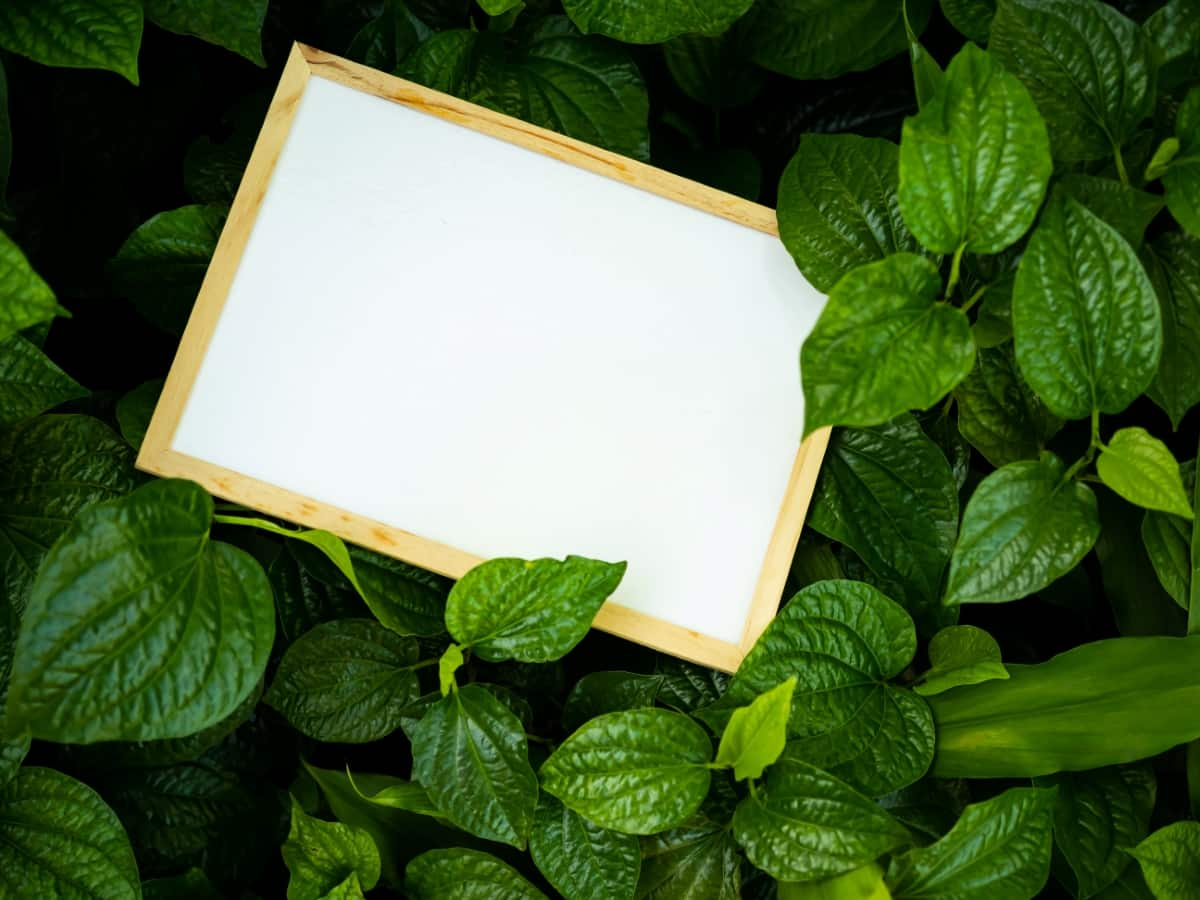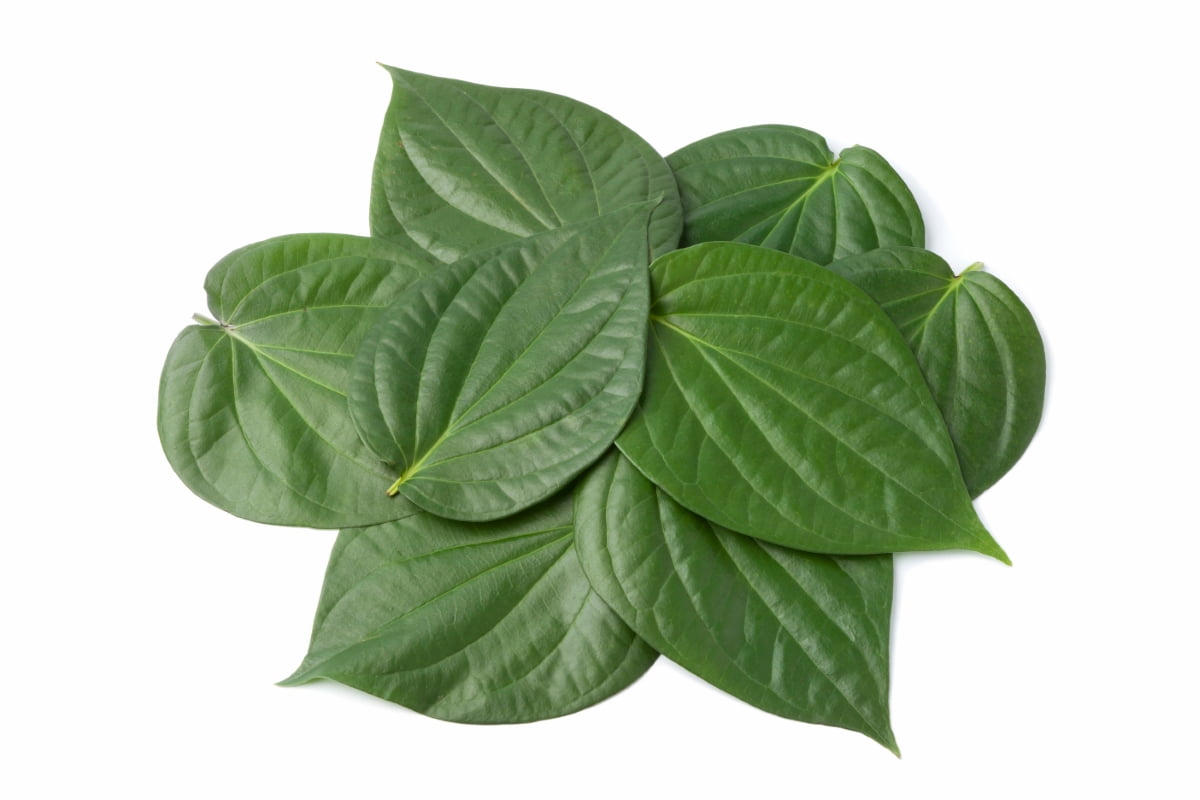Betel leaf farming, an integral part of agricultural traditions in many Asian countries, presents a unique combination of cultural significance and economic opportunity. Cultivating betel vine, especially in a structured 1-acre farm, encompasses various aspects from land preparation to harvesting, each contributing to the success of the crop.

This report delves into the economics of 1-acre betel leaf farming, offering a detailed analysis of the costs, yield, and profit potential. Understanding these dynamics is crucial for farmers and investors alike, as it provides insights into the profitability and sustainability of betel leaf cultivation, a crop known for its long-lasting yield and cultural importance.
Betel Leaf Farming Project Report
Introduction to Betel Leaf: What is it?
Betel leaf cultivation, a significant agricultural practice in many parts of Asia, involves the growth of the betel vine for its leaves, known as betel leaf. These leaves are highly valued in various cultural and medicinal practices. Betel leaf farming, including betel vine cultivation, has evolved, with techniques such as betel leaf hydroponics gaining popularity.
This method allows for controlled growth conditions, enhancing leaf quality and yield. In India, particularly in regions with suitable climates and soil types, betel leaf cultivation is integrated into multi-cropping systems, like the 1 acre areca nut farm, to boost income and optimize land use.
Best Varieties of Betel Vines for Commercial Cultivation in India
Among the plethora of varieties available, certain types stand out for commercial cultivation due to their unique flavors and qualities. In Uttar Pradesh, varieties like Kapoori, Deswari, Bangla, and Magahi are highly valued. These varieties are known for their robust flavors and are widely sought after. Moving to Bihar, the Calcutta, Desi Paan, and Panton varieties are predominant. Each of these brings a distinct taste and aroma, making them popular choices for local consumption and beyond.
In the culturally rich state of West Bengal, the betel leaf cultivation is diverse, with varieties like Sanchi, Kali Bangla, Mitha, Bangla, and Simurali Bangla being the top choices. These varieties are celebrated for their sweet and mild flavors, catering to a wide range of preferences. The selection of these specific varieties for commercial cultivation in these states underscores their adaptability to local climatic conditions and their popularity in the market, making them ideal choices for farmers looking to venture into betel vine cultivation.
Suitable Climate for Betel Leaf Cultivation
The climate plays a crucial role in betel leaf farming. Betel vines thrive in a warm, humid climate with well-distributed rainfall throughout the year. Regions with temperatures ranging from 20°C to 35°C and high humidity levels are ideal. These conditions facilitate rapid growth and high-quality leaf production. Farmers often use protective structures to maintain these conditions, ensuring a consistent supply of betel leaves regardless of seasonal changes.
Best Soil Type for Betel Leaf Farming
Soil quality significantly impacts betel leaf farming. Gardeners can enhance the well-being and output of their tomato plants by taking into account elements such as container size, greenhouse conditions, pruning techniques, and seasonal fluctuations. This type of soil supports robust root development and ensures optimal nutrient uptake.
Additionally, maintaining a slightly acidic to neutral soil pH, typically between 5.5 and 7, is vital for the best growth of betel leaves. This pH range ensures the optimal availability of essential nutrients in the soil. Farmers enrich the soil with organic compost and manure, enhancing its fertility and structure, which in turn boosts plant health and leaf yield.
Soil Sterilization for Planting of Betel Leaf Cuttings
Soil sterilization is an essential step before planting betel leaf cuttings. This process involves treating the soil to eliminate pathogens and pests that could harm the young plants. Techniques like solarization, where the soil is covered with plastic sheets and exposed to the sun, or the use of organic fungicides, help create a safe growing environment.
In case you missed it: Everything You Need to Know About Growing Betel Leaf Plant in the Balcony Pots

Additionally, the application of organic fertilizers like neem cake is crucial; around 0.5 tons per hectare is recommended. In terms of pest control, carbofuran is used at a rate of 0.7 kg per hectare. This preparation ensures healthy growth and minimizes the risk of diseases affecting the betel vines.
Number of Betel Leaf by Cuttings Per Acre
In betel leaf cultivation, the number of cuttings planted per acre is a critical factor in determining the farm’s productivity. On average, about 60,000 to 70,000 cuttings are planted per acre. This density allows for optimal growth and yield while ensuring each plant receives adequate nutrients and sunlight. Careful planning of the plantation layout maximizes space utilization and facilitates easy maintenance.
Best Season for Betel Leaf Farming
The best season for betel leaf farming is typically the monsoon or the pre-monsoon period. Planting during this time takes advantage of the natural rainfall, reducing the need for artificial irrigation. The increased humidity and moderate temperatures during these seasons create an ideal environment for the cuttings to root and grow. Timely planting ensures a steady growth cycle and aligns the harvest with periods of high market demand.
Organic Fertilizers and Compost Required for Betel Leaf Farming
A balanced NPK (Nitrogen, Phosphorus, Potassium) ratio is crucial for betel vines. Typically, an NPK ratio of 10:10:10 is recommended, providing equal parts of each nutrient. Organic sources of nitrogen, such as composted manure or fish emulsion, are vital for leaf growth and overall plant health.
Phosphorus can be supplied through bone meal or rock phosphate, aiding in root development and plant maturation. For potassium, which is essential for disease resistance and water regulation in plants, organic options like wood ash or greensand can be used. Regular application of well-rotted compost also helps in improving soil structure and water retention, providing a sustained release of nutrients.
Best Time to Harvest Betel Vine Leaves
The best time to harvest betel vine leaves is crucial for achieving the optimal quality and flavor. Typically, the leaves are ready for harvesting 6 to 7 months after planting the cuttings. The ideal stage for picking is when the leaves are fully grown but still tender, with a vibrant green color.
In case you missed it: Fertilizing Potted Betel Leaf: Organic, Natural, Homemade, NPK Ratio, When and How to Apply

Harvesting at this stage ensures the leaves are at their prime in terms of texture and taste. Regular harvesting, done every 15 to 30 days after the first pick, encourages new growth and increases the overall yield. Timing the harvest right is essential for farmers to meet market demand, especially during festive or peak consumption periods.
Yield of Betel Leaves per Acre
The yield of betel leaves per acre is a significant aspect of betel vine cultivation, determining the profitability of the farm. Generally, a well-maintained betel vine farm can produce between 800 to 1000 kilograms per acre annually. This yield can vary based on factors like vine variety, soil quality, climate conditions, and farming practices.
Employing advanced techniques such as betel leaf hydroponics can further enhance the yield. Efficient management, timely harvesting, and proper care of the betel vines are key to maximizing the yield and ensuring a steady income for farmers, especially those integrating betel leaf cultivation with other crops like in a 1 acre areca nut farm system.
Economics of 1-Acre Betel Leaf Farming Project Report: Costs and Profit Analysis
Land Preparation Costs
- Range: INR 15,000 to INR 25,000 per acre.
- Activities: Clearing, plowing, leveling, and soil preparation.
Planting Material Costs
- Range: INR 50,000 to INR 80,000 per acre.
- Includes: Betel leaf cuttings or saplings.
Fertilizers and Pesticides Costs
- Range: INR 20,000 to INR 30,000 per acre.
- Factors: Soil condition and specific crop requirements.
Irrigation Costs
- Range: INR 10,000 to INR 20,000 per acre.
- For: Setting up irrigation systems or providing regular water supply.
Labor Costs
- Range: INR 60,000 to INR 80,000 per acre annually.
- Includes: Planting, weeding, pruning, and harvesting.
Miscellaneous Expenses
- Range: INR 10,000 to INR 15,000 per acre.
- Covers: Maintenance of equipment, land rent, and administrative costs.
Profits from Betel Leaf Farming
- Yield – Amount: 800-1000 kg per acre annually.
- Market Price – Range: INR 400 to INR 500 per kg.
- Gross Income – Estimate: Approx. INR 4,50,000 per acre (900 kg at INR 500/kg).
- Net Profit – After costs: Approx. INR 1,95,000 per acre annually.
- Additional Information: Betel vines, once planted, can yield for up to 30 years.
- Profit Factors – Dependent on variety, quality, size, and market conditions.
In case you missed it: Frequently Asked Questions About Betel Leaf Farming

Conclusion
Betel leaf farming, particularly on a 1-acre scale, emerges as a viable and profitable agricultural venture. The economic analysis reveals that while initial costs in land preparation, planting materials, and maintenance are substantial, the long-term yield of up to 30 years and the potential annual profit margin makes it an attractive investment.
The success of betel leaf cultivation hinges on factors like choosing the right variety, adhering to best practices in farm management, and staying attuned to market demands. As such, betel leaf farming not only upholds its cultural and traditional value but also stands as a testament to sustainable and profitable agriculture in the modern era.
- Feed Your Flock for Less: Top 10 Tips to Save on Chicken Feed
- Ultimate Guide to Ossabaw Island Hog: Breeding, Raising, Diet, and Care
- Hatching Answers: The Top 10 Reasons Your Chickens Aren’t Laying Eggs
- Eggs and Economics: Breaking Down the Cost of Raising Backyard Chickens
- Defend Your Greens: Proven Methods to Keep Iguanas Out of Your Garden
- Ultimate Guide to Cinnamon Queen Chicken: A Comprehensive Guide for Beginners
- Ultimate Guide to California Tan Chicken: Breeding, Raising, Diet, Egg-Production and Care
- Ultimate Guide to Marsh Daisy Chicken: Breeding, Raising, Diet, and Care
- 10 Types of Chicken Farming Businesses You Can Start for Profits